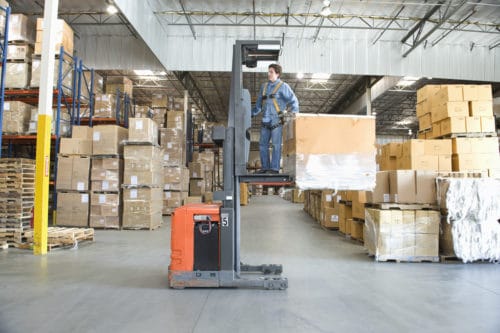Enhancing Procedures: The Power of a Trusted Processing Company
Enhancing Procedures: The Power of a Trusted Processing Company
Blog Article
Efficient Industrial Recycling Solutions for Sustainable Product Packaging: A Comprehensive Overview
In today's progressively environmentally-conscious globe, the need for sustainable packaging options has actually never ever been greater. To satisfy this need, businesses across industries are actively looking for reliable commercial recycling solutions. However, navigating the complex landscape of lasting product packaging can be challenging without a detailed guide. That's where this comprehensive guide on reliable industrial recycling solutions for sustainable product packaging can be found in. By exploring essential areas such as packaging product selection, developing for recyclability, carrying out recycling infrastructure, working together with recycling companions, and monitoring and determining recycling success, this overview will certainly furnish you with the understanding and tools essential to make enlightened decisions and drive positive adjustment within your organization. Whether you're a packaging professional, sustainability manager, or simply interested in the subject, this overview will provide valuable understandings and methods to assist you navigate the globe of lasting packaging.
Product Packaging Product Option
The option of packaging products plays an important duty in making sure the sustainability of commercial reusing services. The option of products is crucial in decreasing ecological impact and maximizing reusing effectiveness when it comes to sustainable product packaging. Selecting the right products can assist minimize waste generation, save resources, and advertise a circular economic climate.
One important factor to take into consideration in packaging material option is recyclability - processing company. Materials that can be conveniently reused and included back right into the production cycle are chosen. Products like cardboard, paper, glass, and particular kinds of plastics can be reused numerous times without shedding their top quality. On the other hand, materials that are challenging to reuse, such as non-recyclable composites or blended plastics, can develop challenges for the recycling process and may end up in burners or garbage dumps.
Another consideration is the usage of naturally degradable and eco-friendly materials. Packaging made from renewable energies, such as plant-based plastics or biopolymers, can aid minimize dependency on nonrenewable fuel sources and mitigate environment modification. In addition, biodegradable materials break down normally gradually, reducing the buildup of waste in land fills.
In addition, the weight and quantity of product packaging products ought to be reduced to decrease transportation expenses and energy usage. Light-weight products not just need fewer sources during manufacturing however likewise add to reduce carbon discharges throughout transportation.
Designing for Recyclability
Packaging designers must focus on the usage of materials that are commonly accepted for recycling and have actually established recycling frameworks. Products such as glass, aluminum, and certain kinds of plastic, like Family pet and HDPE, are frequently reused and must be chosen over materials that are challenging or pricey to recycle.
One more crucial consideration in developing for recyclability is the removal of unnecessary components or products. By lessening the number of layers, coatings, and additional components, product packaging can be made simpler and less complicated to reuse. Additionally, designers need to intend to minimize the use of combined materials, as they can make complex the reusing process.

Implementing Recycling Infrastructure
Effective application of recycling facilities is essential for the success of commercial recycling remedies. Without correct infrastructure in location, the reusing process comes to be inefficient and ineffective, hindering the general objective of sustainable product packaging.
To carry out reusing infrastructure effectively, a number of key aspects require to be considered. There need to be a well-organized collection system that assists in the separation and collection of recyclable materials. This can include assigned reusing containers in public spaces, in addition to collaborations with waste monitoring firms for curbside pickup and sorting.
Once gathered, the recyclable products require to be transported to recycling facilities in a prompt manner. This requires efficient logistics and transportation networks, guaranteeing that the materials reach the proper centers without hold-up.
At the reusing centers, progressed sorting and handling modern technologies should be in place to separate different types of materials efficiently. This includes the use of automated arranging equipments, optical scanners, and hand-operated sorting strategies.
In addition, there need to be a durable market demand for recycled products. This can be attained with partnerships with suppliers and markets that use recycled products in their manufacturing processes. Developing a steady market for recycled products incentivizes the reusing industry and advertises the round economic situation.
Teaming Up With Recycling Allies

One secret element of collaborating with recycling companions is the facility of clear communication networks. It is crucial to establish open lines of communication to facilitate the exchange of details, updates, and comments. This allows both events to stay informed about the progression of recycling initiatives and resolve any type of difficulties or problems that might develop.
Additionally, cooperation can include collaborations in carrying out and designing reusing programs. Recycling companions can supply important understandings and assistance in creating reliable collection systems and figuring out the most proper Extra resources recycling technologies. By interacting, businesses and reusing partners can enhance the reusing process and decrease waste.
Furthermore, cooperation can extend past the functional elements of reusing. It can also include campaigning for and education and learning efforts. By joining pressures, businesses and recycling partners can increase recognition about the value of reusing and advertise the adoption of lasting product packaging practices among consumers and various other stakeholders.
Tracking and Measuring Recycling Success
To make sure the performance of industrial recycling services and the accomplishment of lasting packaging objectives, it is important for organizations and their recycling companions to develop an extensive system for tracking and determining reusing success (plastic container manufacturer). Gauging and tracking reusing success enables organizations to evaluate the effect of their recycling efforts, determine areas for enhancement, and established significant targets for future development
One method to track recycling success is via using data collection and evaluation devices. By accumulating information on the quantity of product packaging waste created, the percent of waste that is reused, and the kinds of materials being recycled, services can get valuable understandings into their recycling performance. This data can after that be assessed to determine patterns, patterns, and areas of ineffectiveness.
An additional important aspect of tracking and determining recycling success is developing standard and clear metrics. This enables companies to contrast their performance versus sector standards and track their progression over time. Metrics such as recycling rates, waste diversion prices, and greenhouse gas discharges can give a measurable step of a company's reusing success.

Conclusion
Finally, carrying out effective industrial recycling options for sustainable product packaging calls for cautious consideration of product packaging product choice, designing for recyclability, applying recycling framework, teaming up with recycling companions, and tracking and gauging recycling success. By including these methods, services can contribute to an extra environmentally-friendly and lasting method to product packaging, decreasing waste and advertising the circular economic situation.
By checking out vital areas such as product packaging material option, developing for recyclability, applying recycling facilities, teaming up with recycling companions, and tracking and determining reusing success, this guide will outfit you with the knowledge and tools essential to make informed decisions and drive positive adjustment within your company. Packaging designers must focus on the usage of products that are widely approved for recycling and have developed reusing you can try these out infrastructures.Partnership with reusing partners is essential for the successful application of commercial reusing solutions and the success of lasting packaging goals. By joining pressures, organizations and recycling companions can elevate recognition concerning the look at more info significance of recycling and advertise the adoption of sustainable packaging methods among consumers and other stakeholders.
By accumulating data on the amount of packaging waste generated, the percentage of waste that is recycled, and the types of products being reused, organizations can obtain beneficial understandings into their recycling performance.
Report this page